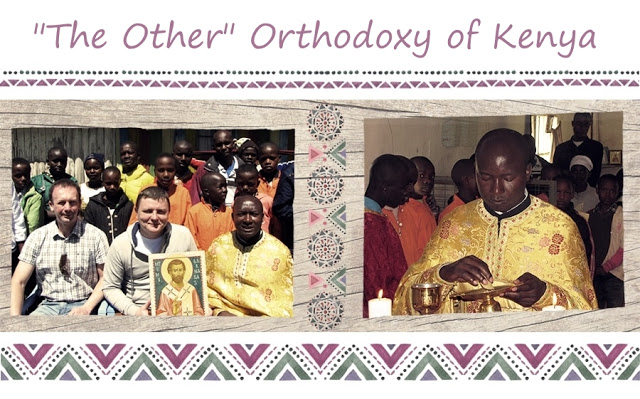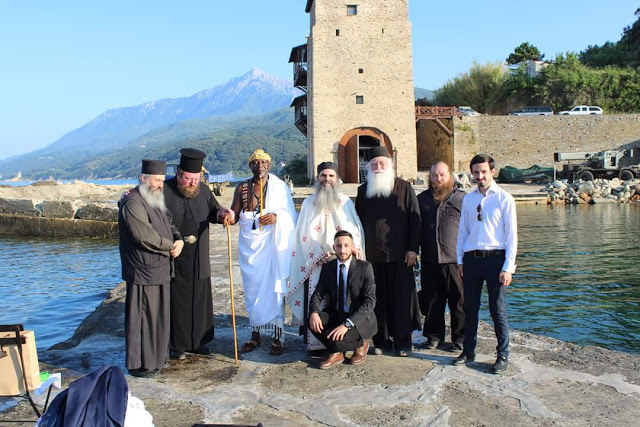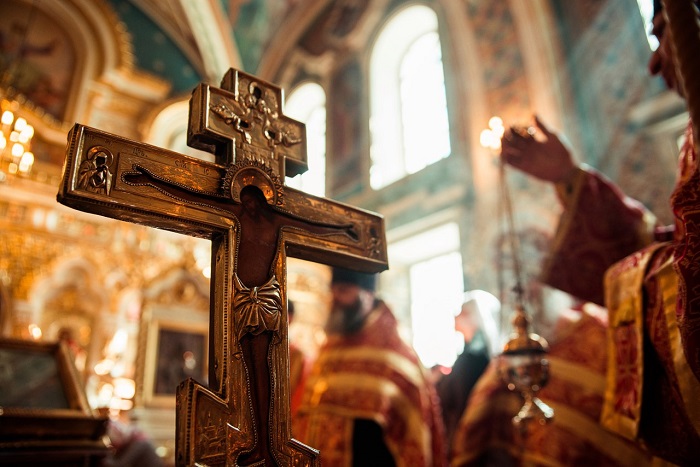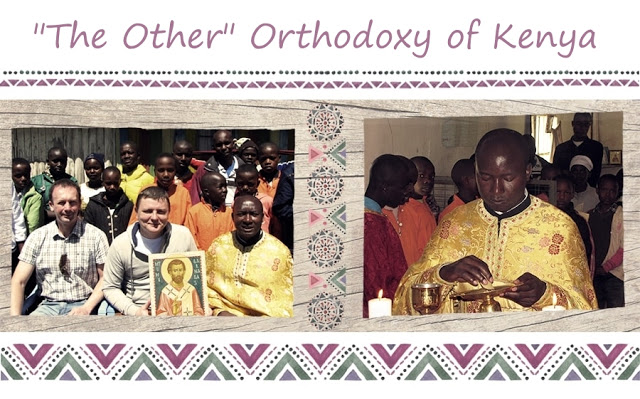
What can we say about the Orthodoxy in Kenya? I think I should forgo the statistical data, which you can find in many articles in Russian and English, and stick to “what our eyes have seen.”
![]()
There are many children in the Orthodox parishes in Kenya. Children often constitute 70–80 percent of a congregation. There are a lot of orphans in the country. AIDS, hepatitis, and other diseases take their toll on the Kenyan population. Coupled with drug and alcohol abuse, this disastrous situation leaves many children in need of foster care. This is the kind of work that the Orthodox Church has undertaken. The Church establishes schools and shelters to feed and clothe the children, at the same time preaching Christianity. Aside from comprehensive education, young Christians study the tenets of the Orthodox faith and participate in church worship and the operation of the shelter. That is how they naturally become more involved in the life of the Church. This missionary strategy has been implemented for a couple of decades and has proven to be very effective: the Orthodox Church in the country demonstrates remarkable growth.
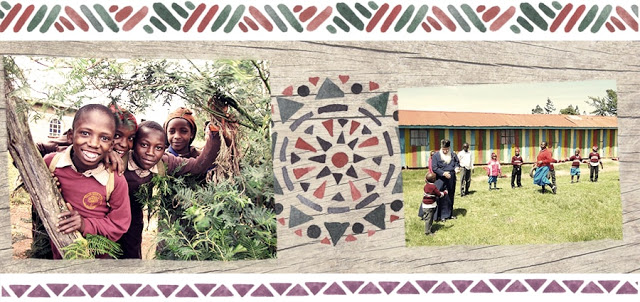
Most of educational facilities and shelters look unseemly. The buildings stand on rented or purchased land and look like bunkhouses without floors and windows, made of planks and other building materials. If there is a water well, it’s considered a blessing. Water is very pricey in Kenya.
![]()
You will hardly see “Orthodox” architecture in Kenya. There are some nice-looking churches but we haven’t seen any luxurious or weird ones. St Macarius Church in the seminary stands out from the rest. There are churches made of stone in Nairobi and several other cities. There are few such churches and most of them don’t look particularly appealing. It costs an immense lot to build a stone church. Many priests used to be enthusiastic about it but could not finish the construction. Churches under construction aren’t a rare view in Kenya.
Going through the country, we came across churches made of wood and all kinds of stuff. They looked less presentable than barns back home. You will suddenly discover that this or that shanty is a church only when you enter it and see the Royal Doors, icons, and candle holders. People sit in church during worship. Anyway, regardless of how run-down the building might be, you’re immediately impressed by its tidy yard. Only the Orthodox and the Catholics seem to have clean church yards in Kenya but I can’t speak for the entire country, of course…
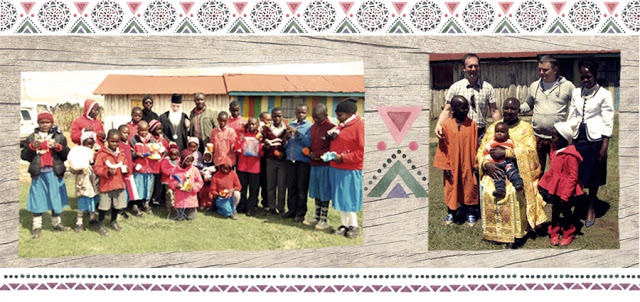
The Church in Kenya is the community — the faithful — rather than edifices. Perhaps, this is its main advantage. The Church does not waste huge amounts on “centennial projects”. It invests in the people, its parishioners. Huge buildings and expensive vestments don’t play any role here. In spite of a favourable attitude of the government, the Church does not enjoy financial support from the state and survives on its own. These conditions make a bag of rice more valuable than some costly adornments of a parish church.
Naturally, one shouldn’t look at Orthodox Christian life in Kenya through rose-coloured glasses. Community life requires some effort, emotional investment, and, what is crucial, good stewardship. We met extremely poor missionaries but they had vibrant communities nevertheless. We also visited stone churches in big Kenyan cities, which stand half-empty even on Sundays. Generally, it is obvious that the most essential aspect of the Orthodox mission is planting the congregation — the community of people who love God and care about each other.
![]()
What are Kenyan priests like? They’re just people. Like ours. Younger priests are filled with zeal and enthusiasm, while the older generation have a more tempered attitude. What they have in common is high theological qualifications, thanks to Nairobi Seminary. The seminary teaches clergy for the entire African continent. Good professors, many of whom received their degrees in Greece and St. Vladimir Seminary in the USA, teach in the seminary. The Primate of the Orthodox Church in Kenya Metropolitan Makarios is an example to follow: he graduated from Oxford University and the
Russian Orthodox Theological Institute in Paris.
Life is tough for the priests who serve far from big cities. The Orthodox Church primarily addresses the poorest groups of population. That is why many priests have to work. For instance, Father John rents two fields where he grows flowers for sale. His work day begins very early. Before he comes to the shelter and plunges deep in the problems of the school and the children, he works in the fields with his family. After 6 PM, when most of the children go back to their homes, he has to return to the fields in order to feed his family. The life of Orthodox clergy is really hard. That is why their happiness is worth much more. They are happy not because life’s always good; it originates in their ability to knock at the heaven’s door and to receive joy from God.
![]()
The high priest of the Kenyan Orthodox Church is a unique and remarkable man. He jokingly calls himself a “grandson” of Saint Silouan the Athonite because Archimandrite Sophrony Sakharov, known to the Russian reader by his brilliant book Elder Silouan, was his spiritual father for more than thirty years. He is the person who sets the standards of behaviour to all priests and lay people in Kenya. He is remarkably active for his age: he teaches in the seminary and travels around Kenya all the time, supporting his priests in their work. Metropolitan Makarios keeps looking for ways to fund the
construction of churches, schools, and shelters.
When we first visited Kenya, Metropolitan Makarios took us on a visit to some local parishes. We visited five or six parishes in one day and brought them some humanitarian aid. At the end of the day, our legs were swelling so hard that we could barely move, but His Eminence was still smiling and lively.
Metropolitan Makarios is easy-going, far from the image of a self-important and arrogant “prince of the Church”. As soon as he met us, he led us to the seminary refectory, seated us around a table, and started waiting on us: he fetched new meals and carried away our dirty plates. It puzzled us because our people are not accustomed to this kind of Gospel-like simplicity and modesty. He does not have guards, expensive accessories, and stylish cars. You immediately comprehend that he is a true monk. He doesn’t care who you are: the President of Cyprus, with whom he talked on phone in our presence, or a regular guy from a poor neighbourhood…
Returning to Nairobi from our mission trip to the coast, we knew: Metropolitan Makarios was there waiting for us. He phoned us several times to make sure that we were okay. When we finally arrived at the seminary several hours later, in the middle of the night, he was really waiting for us. He grabbed one of our bags and tried to carry it to our cell. Doesn’t it speak louder than words? His priests love him very much. I have never witnessed such friendly and warm relationships before.
![]()
A liturgy in Kenya is accompanied by joyful songs and dance. The dance is meant to glorify God. It doesn’t have any erotic or dirty connotations. It’s absolutely pious and fits into the worship harmoniously. Africans dance everywhere but it doesn’t mean that they dance during every service, not at all!
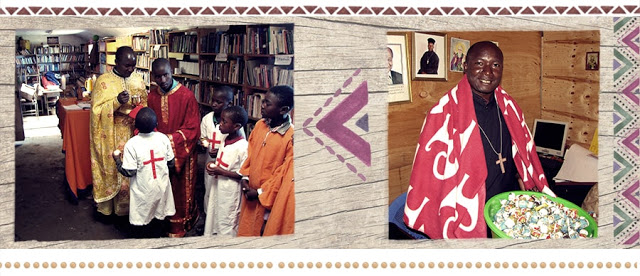
Parishioners actively participate in the Divine Liturgy. They read the Holy Scripture, recite prayers, sing chants and hymns. The Eucharist crowns everything.
It is during one such service that it suddenly dawns on you that their joy is for real. Many of them literally live in hell. The Church and common prayer is their only beam of hope and joy. Our “proper reading” of prayers, not grounded in the spirit of those prayers, is much more dangerous and hypocritical than their childlike spontaneity. You suddenly realise that God is present.

There is no “other” Orthodoxy. It’s exactly like ours. There are various conditions that people live and get saved in but everyone is saved by the same Jesus Christ.
Every time I return home from a mission trip, I start looking at what the Lord has given me from a different angle. We are so happy to see open churches, have the chance to read the Gospel and do the ministry! How much we are given and how insensitive to it we have become!
People always ask me why children in Africa keep smiling, despite their poverty, diseases, and hunger. I don’t know. Maybe their eyes aren’t worn out by the screens of iPhones, their spiritual eyesight is still strong, and they can feel that God is always near because they are loved.
End of Part II

